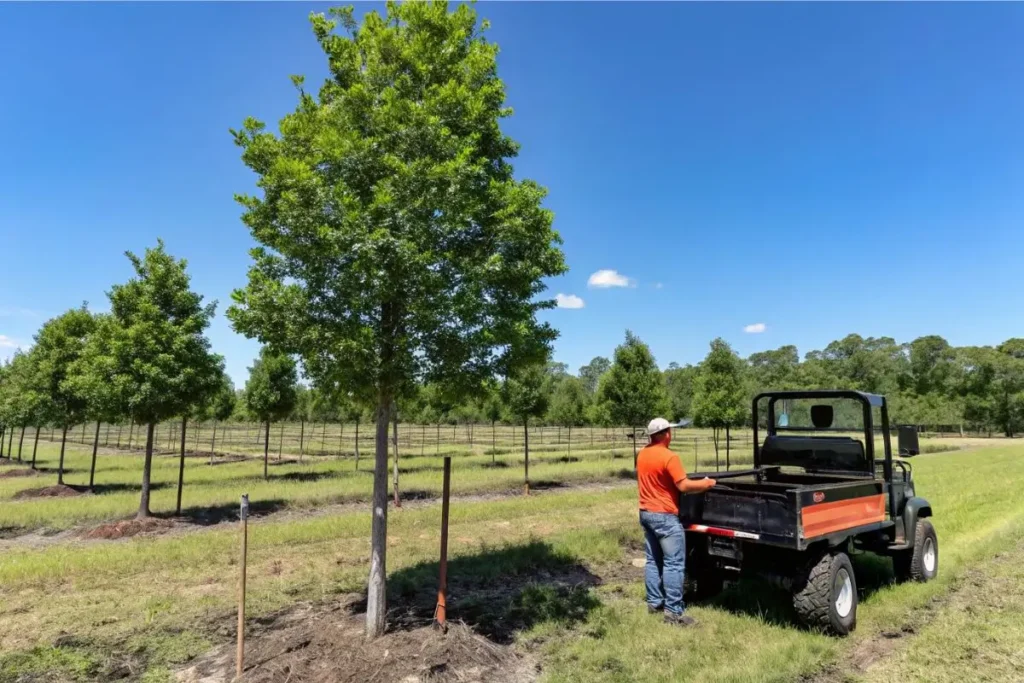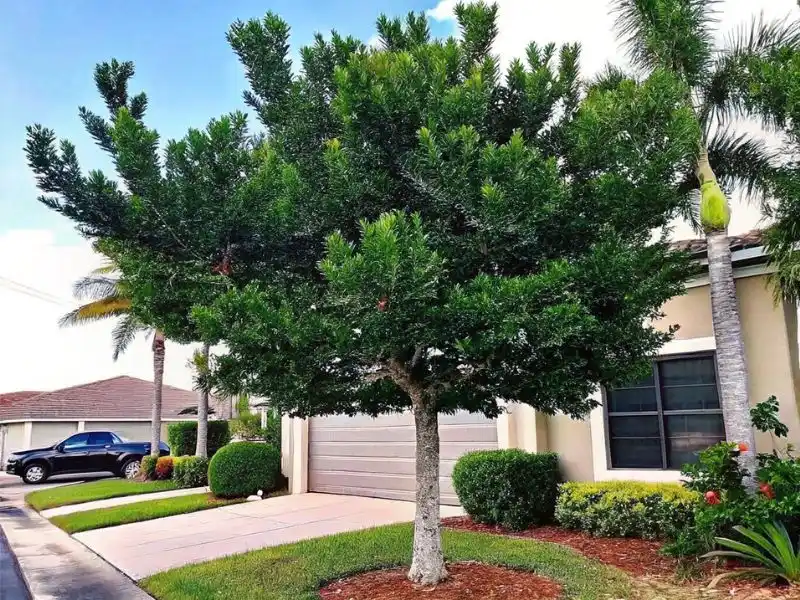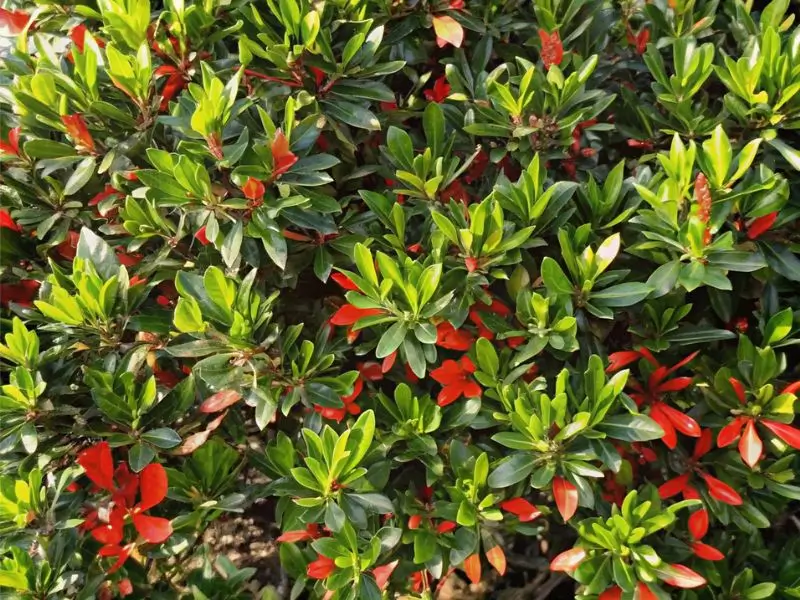
I’ve always been captivated by leafy spaces, especially when they feature evergreens that stay gorgeous all year. Today, I’ll talk about my favorite question: How big does a Japanese blueberry tree get? You’ll learn about its typical height, the conditions that help it grow even taller, and tips for caring for these beauties. Let’s get started!
Table of Contents
Introduction to the Japanese Blueberry Tree
Overview – My First Encounter
I still remember the day I stumbled on my neighbor’s row of Japanese Blueberry Trees (Elaeocarpus decipiens). The question running through my mind was, How big does a Japanese blueberry tree get? because those trunks and evergreen leaves seemed so impressive, even from a distance. The thick foliage offered privacy, plus a lush, tropical feel.
- Elaeocarpus decipiens is an evergreen known for year-round greenery.
- New leaves often appear in a bronze or reddish shade before turning glossy green.
- It’s popular for both hedges and ornamental focal points.
At first, I worried these trees might be fussy, but I soon realized they’re surprisingly straightforward to maintain. Plant them in a decent spot, water them as needed, and they’ll reward you with a steady growth pattern.
Background & Origin
They’re named “Japanese Blueberry” but appear across parts of East Asia. Though the berries aren’t typically eaten, they do add ornamental interest (and sometimes attract local birds). The upright shape and somewhat exotic look make them a go-to for homeowners wanting a simple yet classy landscape element. And, of course, the question How big does a Japanese blueberry tree get? usually comes up right after people see them standing proud in someone’s yard.
Key Characteristics
Evergreen Nature & Standout Foliage
These trees don’t lose leaves each fall, which is a huge perk. When other plants go dormant and bare, Japanese Blueberry Trees stay vibrant:
- Year-round Color: The leaves remain glossy, adding constant visual appeal.
- Low Leaf Drop: Less raking and less clutter around the yard.
I’ll never forget my first winter with them—while everything else looked bleak, those glossy leaves kept my space alive and inviting. Any time a friend popped by, they’d ask, How big does a Japanese blueberry tree get? because it was clearly outlasting other deciduous options.
Landscaping Value – Practical & Pretty
Looking for privacy? Plant several Japanese Blueberry Trees in a row, and you’ll form a lush, green fence. Want a showstopper in the front yard? A single, well-placed tree delivers that “wow” factor.
- Works equally well in contemporary or traditional landscapes.
- Complements flowering shrubs due to the contrast of shiny leaves.
- Provides a moderate amount of summer shade when planted near seating areas.
Their adaptability makes them perfect for different design styles—coastal, cottage, or even semi-tropical setups. Plus, their spherical or upright shape usually won’t sprawl wildly, giving you a sense of structure without dominating the entire space.
How Big Does a Japanese Blueberry Tree Get? Typical Dimensions

Average Height & Growth Rate
The burning question: How big does a Japanese blueberry tree get? On average, these trees range from 20 to 30 feet tall. However, if your climate is extra warm and soil conditions are just right, they could tap the 40-foot mark. Growth wise, they’re typically moderate:
- Yearly Growth: About 1–2 feet per year.
- Patience Required: They won’t shoot up overnight, but they aren’t slouches either.
One of my favorite things is that you can predict their size fairly well. After all, not everyone wants a 70-foot giant overshadowing the house. At the same time, folks usually hope for decent coverage, and these trees deliver just that.
Canopy Width & Shade Potential
Aside from height, canopy width is a big part of how we view “size.” Typically, the tree’s spread spans about 10 to 15 feet. That’s enough to produce fantastic shade or block a busy street view. When people visualize how How big does a Japanese blueberry tree get? might look in real life, I often say:
- Picture a tidy umbrella of thick leaves.
- Expect a uniform silhouette—slightly oval or columnar, depending on pruning.
- Space them roughly 10 feet apart if you’re planning a privacy row.
In my own yard, the canopy became a sweet retreat on hot afternoons. I’d lounge with a cold drink, appreciating how the overhead leaves filtered the sun. Remember, different growing conditions—like soil type, rainfall, temperature swings—will nudge these dimensions around. But in most suburban settings, 20–30 feet tall and 10–15 feet wide is a safe bet. For many homeowners, that’s the perfect blend of presence and manageability.
Maximum Height & Width
Perfect Conditions for Bigger Growth
Occasionally, people spot a Japanese Blueberry Tree nearing 40 feet or more. If you’re specifically aiming for maximum height, you’ll want:
- Mild Winters: Frequent frosts can slow expansion.
- Well-Drained Soil: Roots need proper airflow to dig deep.
- Regular Water: Consistent but not excessive moisture in the summer.
- Full/Partial Sunshine: Enough light to fuel photosynthesis without scorching.
Under these sweet conditions, How big does a Japanese blueberry tree get? can exceed typical bounds. It might be the crowning jewel in your yard, topping out around 35–40 feet—maybe slightly more if you have a truly ideal climate. If you’re unsure about the pros and cons, check out “Is Japanese Blueberry a Good Tree?” on choosing Japanese Blueberry Trees.
Genetics & Cultivar Differences
The phrase How big does a Japanese blueberry tree get? can vary because some cultivars stay smaller. Nurseries may label them as dwarf varieties, capping around 15–20 feet. Others are bred for robust vertical growth. I recall planting two standard types in different parts of my yard—one soared, the other lagged slightly but still looked healthy.
- Check Nursery Info: They often list expected height/width.
- Keep in Mind Genetic Variation: Even close relatives can show differences.
- Observe Over Time: Growth patterns become clearer around the 3- to 5-year mark.
In truth, variability is normal in horticulture, so don’t fret if your friend’s tree rocketed past yours. Conditions differ, and genetics has a say in How big does a Japanese blueberry tree get? right in your own backyard. Give it proper care and patience, and it’ll reward you with lasting beauty.
Planting & Maintenance

Preparing the Soil & Checking pH
When it’s time to plant, target well-draining soil. Clay-based soil can be improved with compost or coarse sand—nobody likes soggy roots. A pH between 6.0 and 7.5 generally suits a Japanese Blueberry Tree. If you’re worried the environment is too acidic or too alkaline, do a quick test.
According to the United States Department of Agriculture guidelines, many ornamental trees thrive when their roots have adequate airflow and moderate moisture. Ensuring these basics helps boost How big does a Japanese blueberry tree get? in real-world conditions.
Water, Fertilizer & Mulch
- Watering: Two to three weekly sessions for new trees, tapering off as they mature.
- Fertilizing: A slow-release, balanced product in spring sets the stage for healthy leaves and steady growth.
- Mulching: A 2–3 inch layer helps retain moisture and prevent weeds.
Keeping roots cool and hydrated pushes the tree toward that prized 20–30 foot range (or more!). Just remember, overwatering can suffocate roots, while starving them of water can stunt that upward climb.
Pruning & Shaping
Timing Your Prune
Late winter or early spring is generally the best window for pruning. That way, you trim off dead or weak branches before the new growth spurt. If you let branches overgrow, you might see them flopping under their own weight later in the season.
Guiding Size & Form
If you’d like a tall, elegant profile, keep pruning minimal—just dead, crossing, or diseased limbs. If you’re aiming for a shorter, denser form, lightly snip back the top growth each year:
- Encourages branching below.
- Maintains a lush, hedge-like shape.
I’ve tried both methods. On one side of my house, I let the tree stretch upward naturally. On the other side, I trimmed more frequently for a neat, compact look. Both turned out gorgeous in their own way, proving that How big does a Japanese blueberry tree get? can be influenced by your pruning approach.
Common Issues & Size Impact
Pest or Disease Concerns
Japanese Blueberry Trees are generally robust, but scales may appear on leaves, causing nutrient drain. Leaf spots or fungal issues can arise in overly damp or humid spots. Addressing these early keeps the tree strong—and helps it reach its potential girth and height.
- Watch Undersides of Leaves: Catch pests before they multiply.
- Provide Good Airflow: Crowded branches trap moisture, inviting fungus.
Weather & Growth
Extreme weather can hinder How big does a Japanese blueberry tree get? Colder zones might see slower growth or partial dieback if frost is persistent. Meanwhile, blazing summer heat demands extra hydration.
Weather-Proof Strategies:
- Mulch thoroughly to stabilize soil temperature.
- Water more in droughts but avoid puddles.
- Use windbreaks or trunk wraps in severe cold snaps.
When the environment cooperates, your Japanese Blueberry Tree soldiers on, gradually stretching taller and thicker each passing year.
FAQs
Do They Grow Fast?
They’re considered moderate growers, around a foot or two per year. That pace is actually ideal if you want a balanced approach—enough coverage, yet not an immediate jungle.
How Long to Reach Full Size?
Often 10–15 years for that 20–30 foot mark. Some folks get there faster, especially in warmer zones. If a friend asks, How big does a Japanese blueberry tree get? you can say it’s all about patience, good soil, and a bit of luck.
Signs of Over/Underwatering?
- Overwater: Yellow leaves, musty odor, or root rot.
- Underwater: Wilting, crisp foliage, slowed growth.
Strike a balance. Check soil moisture a couple inches down before adding more water.
Container Growing?
Sure! If space is tight, grab a large pot, fill it with quality potting mix, and water regularly. Just note, a container-grown Japanese Blueberry Tree won’t hit the same towering heights. How big does a Japanese blueberry tree get? in a pot is usually limited, topping out in the mid-teens.
Grow It Bigger, Keep It Healthier

Smart Feeding for Steady Growth
Don’t overdo fertilizer. A single spring feeding with a balanced, slow-release blend is typically enough. Too much can trigger weak, leggy branches that snap in high winds.
- Check Leaf Color: If new leaves appear pale, add a second, lighter feeding in midsummer.
- Maintain Soil Health: Occasional compost topdress can boost root vitality.
Long-Term Game Plan
Prune when needed, but let the tree form its natural shape. Maintain decent watering habits, especially in the first 2–3 years. If you manage these basics consistently, you’ll see a more robust trunk and leaves that glisten in sunlight.
Personal Note:
In my experience, consistent mulching and watchful watering provided the best outcome. After a few seasons, you’ll look at that stately canopy and feel proud. Whenever people stop by, you can happily answer, How big does a Japanese blueberry tree get? by simply pointing to the towering evidence in your yard.
Conclusion
Key Takeaways on Size
So, How big does a Japanese blueberry tree get? Usually 20–30 feet tall with a 10–15 foot canopy. Under prime conditions—think warmth, good soil, and a watchful watering routine—it might surprise you and climb closer to 40 feet. This evergreen’s moderate growth rate makes it a favorite for privacy, ornamentation, and welcoming shade.
Final Thoughts
If you’re considering adding one, research your local climate and soil. Simple steps—like mulching, pruning, and balanced feeding—help it flourish. After a while, you’ll have a stately tree that remains green and eye-catching regardless of the season. Plus, you’ll never run out of chances to chat with curious visitors who inevitably ask, “How big does a Japanese blueberry tree get?” Just point out your thriving, majestic greenery.
Enjoy watching your Japanese Blueberry Tree grow, and remember: the journey from sapling to showstopper is half the fun!

1 thought on “How Big Does a Japanese Blueberry Tree Get?”
Comments are closed.